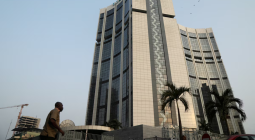African Development Bank and Partners Unveil Guidance to Transform Healthcare Infrastructure in Africa
The African Development Bank and its partners have launched a comprehensive guide that shares practical strategies to ensure equitable access to health infrastructure for sustainable development.
The Guidance for Developing Inclusive Health Infrastructure, co-authored by the Bank, the United Nations Office for Project Services (UNOPS), Arup, and WaterAid, was unveiled during UNOP’s Regional Office for Africa’s first anniversary, held in Nairobi, Kenya, in November 2024.
According to the African Development Bank, access to health infrastructure is unevenly distributed across the continent, with stark disparities in the coverage of rural areas and often of poor quality.
Dalila Gonçalves, UNOPS Regional Director for Africa, emphasized the publication’s significance, describing it as a critical resource on inclusive practices for governments, healthcare planners, operators, and other stakeholders seeking to develop sustainable and equitable health systems.
Hendrina Doroba, Head of the Education and Skills Development Division for the East Africa region at the African Development Bank, highlighted the Bank’s critical role in addressing healthcare infrastructure gaps. She underscored the organization’s unique position as a key infrastructure financier, leveraging its core expertise while partnering with other development partners to bolster national health system strengthening plans. She was accompanied by Peter Ogwang, Chief Health Analyst, at the Bank’s East Africa regional office.
The publication identifies three strategic health infrastructure categories that align with the African Development Bank’s adaptive approach to meeting member countries’ diverse healthcare needs:
- Primary healthcare infrastructure for underserved populations, emphasizing comprehensive infrastructure development that connects to critical services such as water and sanitation, energy, transport, and communications services.
- Investments in developing advanced medical systems, including secondary and tertiary healthcare facilities with specialized centers for cancer, dialysis, and pain management, particularly in countries experiencing a growing burden of non-communicable diseases.
- Diagnostic infrastructure, utilizing innovative delivery models, including public-private partnerships to address severe diagnostic bottlenecks across the continent
Cover photo: Hendrina Doroba, Head of the Education and Skills Development Division for the East Africa region (extreme left front row) and Dalila Gonçalves, UNOPS Regional Director for Africa (2nd left front row) with other invited guests who attended the launch of the Guideline on developing inclusive health infrastructure.



